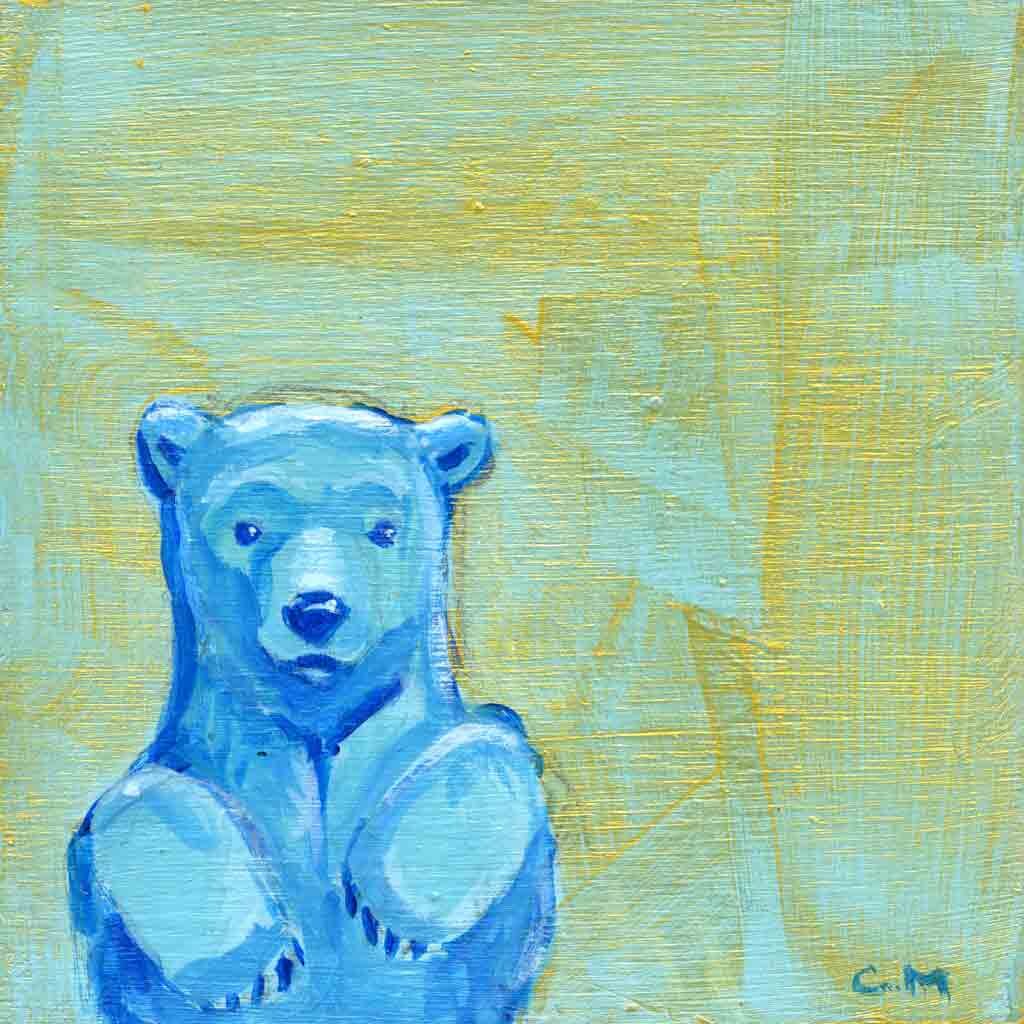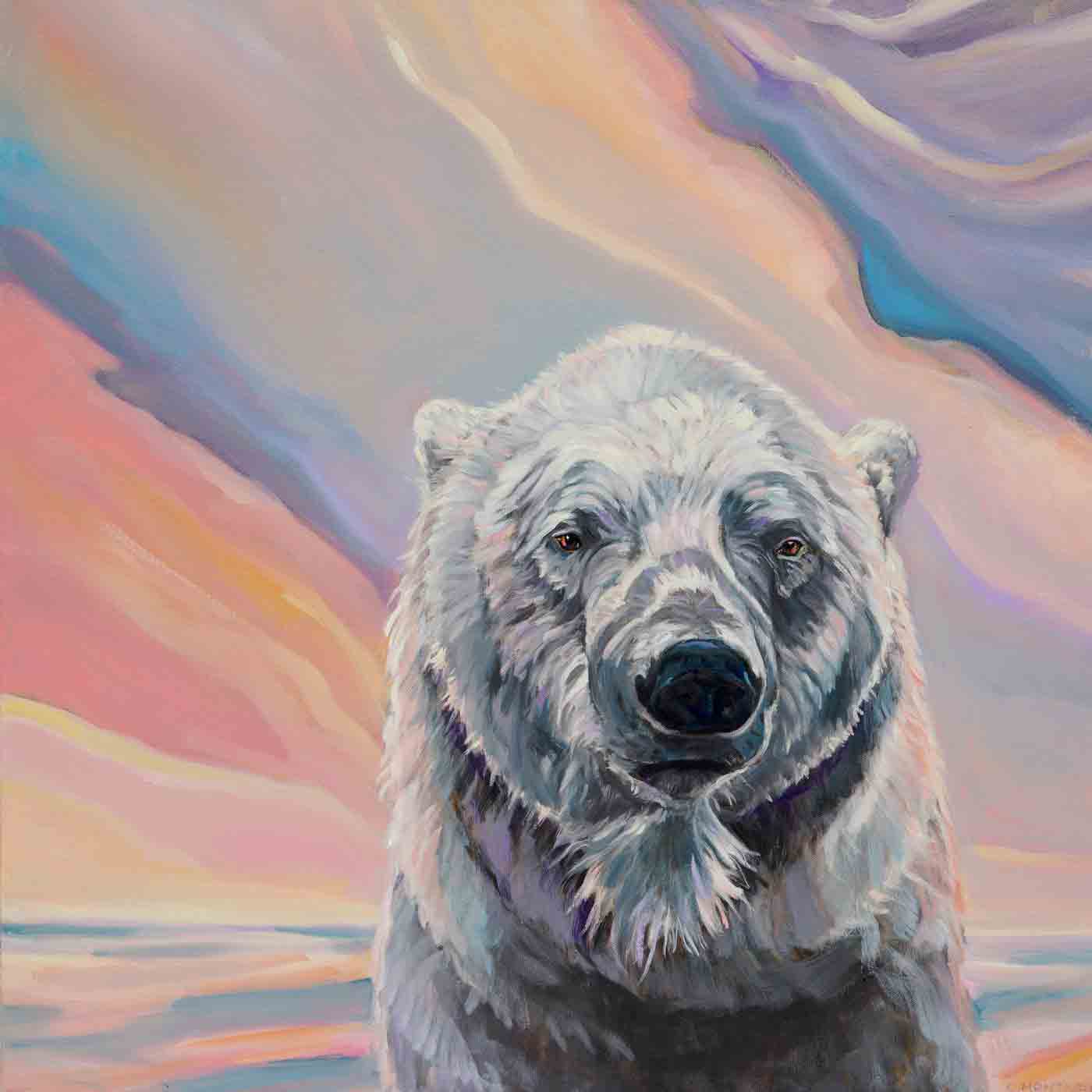Bright in the Night Special offer
(valid until December 31, 2020)
Yesterday, I watched a live stream with Polar Bears International. Sunniva Sorby & Hilde Fålun Strøm of Hearts in the Ice were the special guests.
Bright in the Night. ©Christine Montague ChristineMontague.com Please see original below for painting without text.
For the 2nd winter in a row, these remarkable female citizen scientists, are inspiring active engagement around the climate crisis because of their stay at Bamsebu , a tiny cabin located in extreme isolation on the Norwegian archipelago of Svalbard, about 78 degrees north of the Arctic Circle.
Right now, and for the next 3 months, they are experiencing the“Polar Night”, 24 hours a day they must navigate their surroundings in complete darkness. Polar bears are their nearest neighbor and they must always be on their guard.
I hope for their sakes, that a polar bear, bright in the night, is never a close as it is in this artwork!
In summation, this is a black and white portrait of a colourful bear. His textured white fur is bright , and his intelligence is, too.
This is an original acrylic painting on a 4” x 4" x 1.5 " wood panel.
The edges are a medium grey. It is signed, has a unique work completion number on the back , and is supplied with Certificate of Authenticity. It is perfect for standing on a shelf or table. To hang on a wall, simple put two push pins or two small nails and the inside edge will hang from it. .
Special offer until Dec. 31, 2020-
$130 CAD incl. shipping in North America Reg. $195 CAD
Shopping in USD? No problem - Special is $100 USD. Reg. $150 USD
Please Contact me
Some links you may enjoy -
Polar Bears International
Hearts in the Ice
Bright in the Night. ©Christine Montague ChristineMontague.com








